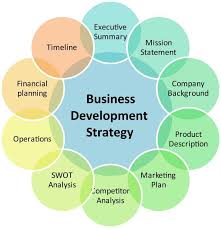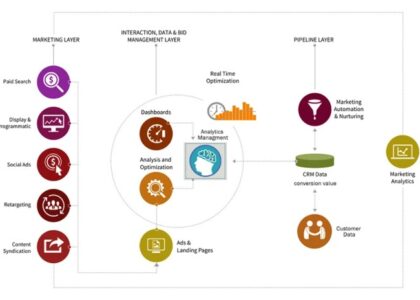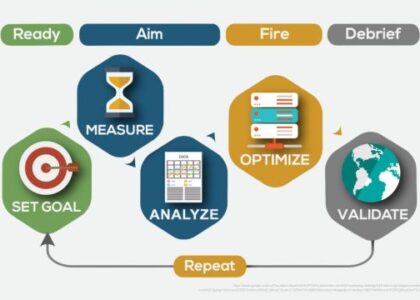The Importance of Strategy and Business Development in Today’s Competitive Landscape
In the fast-paced and ever-evolving world of business, having a clear strategy and robust business development plan is crucial for long-term success. These two elements are intertwined, working hand in hand to drive growth, innovation, and sustainability.
Strategy: A Roadmap for Success
A well-defined strategy serves as a roadmap that guides an organisation towards its goals and objectives. It involves setting clear priorities, making informed decisions, and allocating resources effectively. Without a solid strategy in place, businesses may find themselves drifting aimlessly or reacting to market changes rather than proactively shaping their future.
Strategic planning involves analysing the competitive landscape, identifying opportunities and threats, understanding customer needs, and aligning internal capabilities with external demands. It requires foresight, agility, and a willingness to adapt to changing circumstances.
Business Development: Nurturing Growth Opportunities
Business development focuses on identifying and capitalising on growth opportunities that align with the overall strategic direction of the organisation. It involves building relationships with key stakeholders, exploring new markets, developing innovative products or services, and expanding the customer base.
Effective business development requires a deep understanding of market trends, customer preferences, and emerging technologies. By staying ahead of the curve and anticipating future needs, businesses can position themselves for sustainable growth and competitive advantage.
The Synergy Between Strategy and Business Development
When strategy and business development work in harmony, they create a powerful synergy that drives organisational success. A well-crafted strategy provides the overarching framework within which business development initiatives can thrive. Conversely, successful business development efforts feed back into the strategic planning process by generating valuable insights and data that inform future decisions.
By integrating strategy with business development, organisations can adapt to changing market dynamics more effectively, seize new opportunities swiftly, mitigate risks proactively, and foster a culture of innovation and continuous improvement.
In Conclusion
In today’s competitive landscape, having a strong strategy coupled with proactive business development is essential for sustainable growth and long-term viability. By investing time and resources into strategic planning and nurturing growth opportunities through effective business development practices, organisations can navigate uncertainty with confidence and chart a course towards success.
Strategic Success: Six Essential Tips for Effective Business Development
- Develop a clear vision and set achievable goals for your business.
- Understand your target market and customers’ needs to tailor your strategy accordingly.
- Stay informed about industry trends and competitors to identify opportunities and threats.
- Build strong relationships with stakeholders, partners, and employees to foster collaboration.
- Regularly review and adapt your strategy based on performance metrics and feedback.
- Invest in innovation and continuous improvement to stay competitive in the market.
Develop a clear vision and set achievable goals for your business.
Developing a clear vision and setting achievable goals for your business is a fundamental tip in strategy and business development. A well-defined vision provides a sense of direction and purpose, guiding decision-making processes and aligning efforts towards a common objective. By establishing achievable goals that are specific, measurable, attainable, relevant, and time-bound (SMART), businesses can track progress, stay motivated, and effectively measure success. This strategic approach not only fosters clarity within the organisation but also empowers teams to work cohesively towards realising the envisioned future of the business.
Understand your target market and customers’ needs to tailor your strategy accordingly.
To ensure the success of your business strategy and development efforts, it is crucial to deeply understand your target market and the specific needs of your customers. By gaining insights into their preferences, behaviours, and pain points, you can tailor your strategy in a way that resonates with them. This customer-centric approach not only helps in creating products or services that genuinely address their needs but also strengthens customer loyalty and enhances overall business performance. By aligning your strategy with the demands of your target market, you can position your business for sustainable growth and competitive advantage in today’s dynamic business environment.
Stay informed about industry trends and competitors to identify opportunities and threats.
Staying informed about industry trends and competitors is a fundamental aspect of successful strategy and business development. By keeping a close eye on the latest developments in the market, businesses can identify emerging opportunities for growth and innovation, as well as potential threats that may impact their operations. This proactive approach allows organisations to adapt swiftly to changing circumstances, make informed decisions, and stay ahead of the competition in today’s dynamic business environment.
Build strong relationships with stakeholders, partners, and employees to foster collaboration.
Building strong relationships with stakeholders, partners, and employees is a fundamental tip in strategy and business development. By cultivating these relationships, organisations can create a collaborative environment where ideas are shared, feedback is valued, and collective goals are pursued. Engaging with stakeholders builds trust and loyalty, while partnering with other businesses can lead to innovative solutions and expanded opportunities. Moreover, fostering strong relationships with employees promotes a positive work culture, boosts morale, and enhances productivity. Ultimately, collaboration among all key players strengthens the foundation of a successful business strategy and drives sustainable growth.
Regularly review and adapt your strategy based on performance metrics and feedback.
Regularly reviewing and adapting your strategy based on performance metrics and feedback is a crucial tip in the realm of strategy and business development. By closely monitoring key performance indicators and soliciting feedback from stakeholders, you can gain valuable insights into the effectiveness of your current strategy. This iterative approach allows you to identify areas for improvement, capitalise on successes, and make informed adjustments to stay aligned with your business goals. Embracing this practice fosters a culture of continuous improvement and agility, enabling your organisation to respond swiftly to changing market dynamics and maintain a competitive edge in today’s dynamic business environment.
Invest in innovation and continuous improvement to stay competitive in the market.
To stay competitive in the market, it is essential to invest in innovation and continuous improvement. By fostering a culture of creativity and embracing new technologies, businesses can differentiate themselves from competitors, adapt to changing consumer preferences, and seize emerging opportunities. Continuous improvement ensures that processes are streamlined, products are refined, and customer experiences are enhanced, leading to increased efficiency and customer satisfaction. Embracing innovation and a commitment to ongoing enhancement not only sustains competitiveness but also positions businesses for long-term success in a dynamic business environment.






